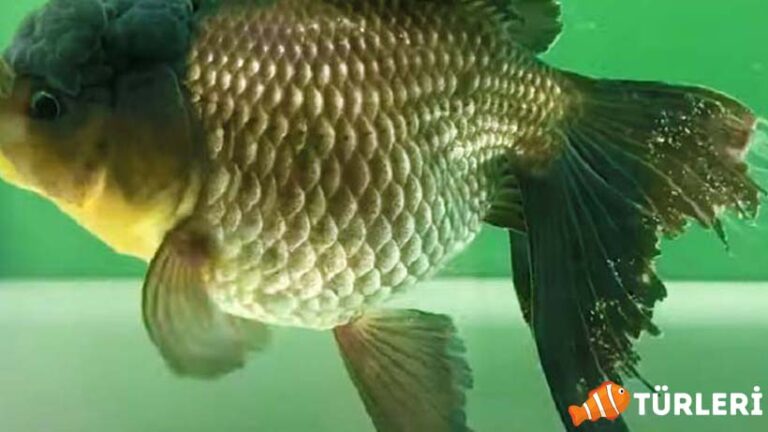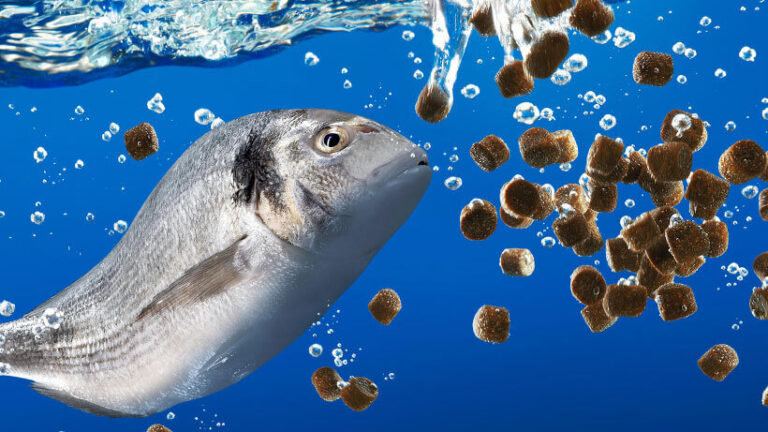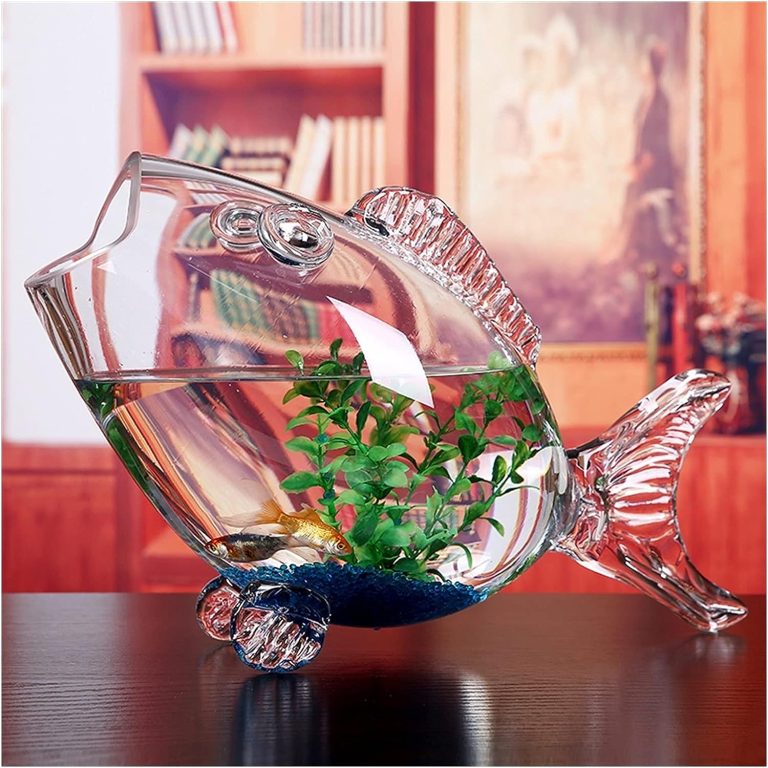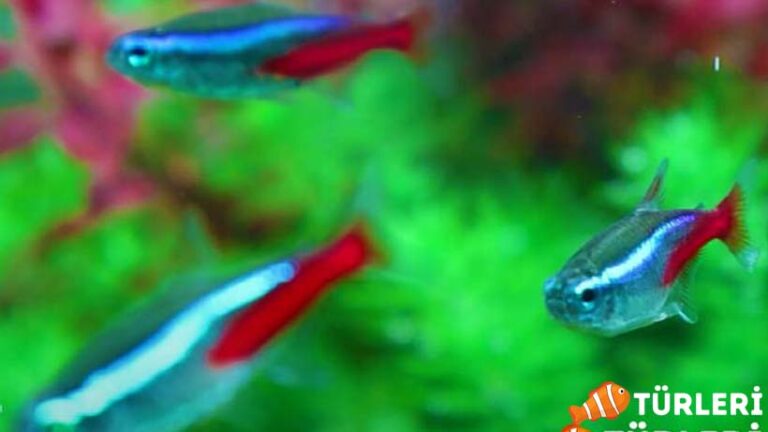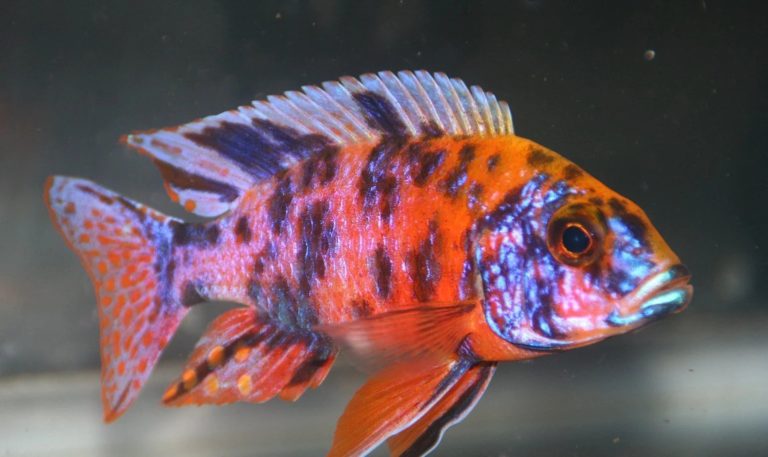Dojo Loach Care (aka Weather Or Pond Loach)
The dojo loach, also known as the weather loach or pond loach, is a popular freshwater fish native to East Asia. It’s known for its ability to sense changes in barometric pressure, and will often become more active before a storm, hence the name ‘weather loach.’ Here is a basic care guide for dojo loach:
Fish Species Summary:
| Scientific Name: | Misgurnus anguillicaudatus |
| Origin: | Freshwater sources of East Asia |
| Diet: | Omnivore (feeds on a wide variety of foods including algae, live or frozen foods like bloodworms, brine shrimp, and daphnia) |
| Behavior: | Peaceful |
| Behavior Towards Their Own Species: | Social, prefers the company of their own kind |
| Swimming Zone: | Bottom |
| Water Temperature: | 50-75°F (10-24°C) |
| Water Hardness: | 5 – 12 GH |
| pH Level: | 7.0 – 8.0 |
| Minimum Aquarium Volume: | 113 Liters (30 gallons) for one, larger for a group |
| Adult Size: | 25-30 cm (10-12 inches) |
| Reproduction: | They lay eggs in burrows or caves |
| Lifespan: | 7 – 10 years (with proper care) |
| Care: | Moderate, requires regular aquarium cleaning and sufficient hiding spaces |
Appearance and Size
The Dojo Loach, often referred to as the Weather Loach or Pond Loach, is a captivating fish known for its elongated, eel-like body. Its smooth, scale-less skin has a unique texture and can come in various shades, from golden to pinkish-grey. What’s fascinating is the presence of the three pairs of barbels around their mouth. These whisker-like appendages help them feel around in murky waters and assist in finding food.
Size-wise, Dojo Loaches can grow quite impressive for an aquarium inhabitant. On average, they reach lengths of about 6 to 10 inches, but in some instances, especially in spacious, well-maintained tanks or ponds, they can grow up to 12 inches. Their larger size, compared to other popular aquarium fish, requires a more spacious environment to ensure they have enough room to move and explore. Also, considering their active nature, adequate space allows them to exhibit their natural behavior and engage in their playful antics.
One more intriguing detail about their appearance is the ability to change color based on their mood or environment. When they’re stressed or in poor health, they might turn pale. But, in ideal conditions and with proper care, Dojo Loaches will flaunt their colors, offering a mesmerizing sight as they dart around, burrow, or simply lounge in your aquarium.
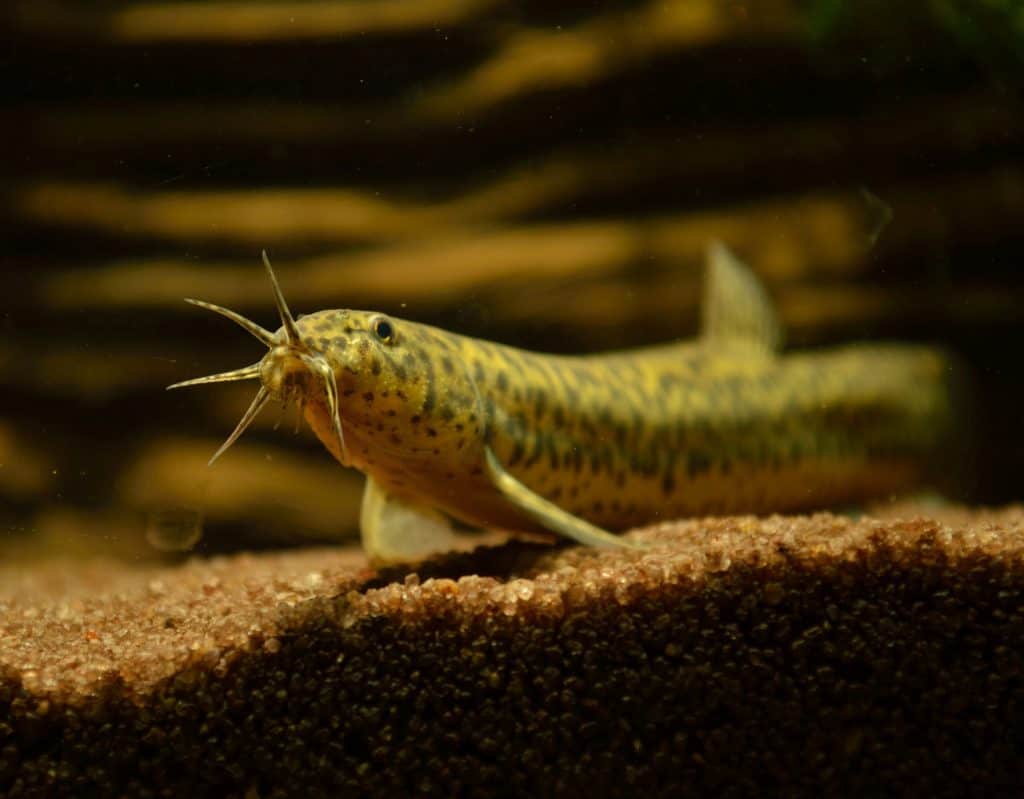
Lifespan
When you bring a Dojo Loach into your aquarium, you’re making a long-term commitment. These fascinating fish have a remarkable ability to thrive for many years under the right conditions. On average, they boast a lifespan of 8 to 10 years in captivity. However, with exemplary care, clean water, and a balanced diet, some have been known to live up to 15 years, a testament to their resilience and adaptability.
One factor that plays a significant role in their longevity is the quality of their environment. Like all fish, they appreciate stable water parameters. Regular water changes, filtration, and monitoring of ammonia, nitrate, and pH levels can keep them in optimal health. Another crucial aspect is their diet. Feeding them a varied diet, including live foods, pellets, and vegetables, will not only meet their nutritional needs but also offer them the enriching experience of foraging and hunting for food.
It’s heartwarming to note that as they age, their personalities shine even brighter. Older Dojo Loaches tend to have distinct behaviors and quirks that make them even more endearing to their caretakers. So, while they might require a bit of extra attention compared to some other species, the years of companionship and entertainment they offer in return are truly priceless.
Diet
Diving into the dietary needs of the Dojo Loach, one soon realizes that these fish are not too picky but certainly relish variety. Hailing from the bottom of the tank, they’re natural scavengers and spend a good chunk of their day rummaging through the substrate in search of tidbits. This behavior doesn’t just make them efficient cleaners, but it also adds to their appeal as active and engaging aquarium residents.
A balanced diet for these loaches should include sinking pellets, which provide them with essential nutrients. But to truly keep them happy and healthy, diversifying their meals is key. They have a particular fondness for live foods such as bloodworms, brine shrimp, and daphnia. These treats not only satisfy their hunting instincts but also ensure they receive a protein-rich diet. Additionally, don’t be surprised if you see them nibbling on soft vegetables like zucchini or cucumbers. Including occasional plant matter provides them with essential fibers, aiding in digestion.
It’s important to remember that while they’re excellent at cleaning up uneaten food, relying solely on this isn’t adequate for their dietary needs. Regular feedings tailored to their preferences will ensure they stay vibrant and active. Watching them sift through the sand or suddenly dart to catch a drifting worm can be a delightful spectacle, showcasing their natural behaviors in the heart of your home aquarium.
Water Parameters
When it comes to keeping Dojo Loaches happy and thriving, water parameters play an undeniably crucial role. These fish, with their playful antics and striking appearance, hail from slow-moving streams and ponds in Asia, which offers clues about their preferred aquatic environment.
Temperature is a primary consideration. Dojo Loaches prefer cooler waters, with an ideal range between 50°F to 75°F (10°C to 24°C). It’s somewhat atypical compared to many tropical fish, so if you’re planning a community tank, ensure their co-inhabitants are also comfortable in these temperatures. Another key factor is water hardness. They fare best in soft to moderately
Filtration and cleanliness are also paramount for these loaches. As bottom dwellers, they’re directly affected by any waste accumulation at the tank’s base. A robust filtration system and periodic substrate vacuuming can help in mitigating this issue. Also, regular water changes-usually around 25% weekly-will help maintain a stable and toxin-free environment. When these factors align, your Dojo Loaches will not only survive but truly flourish, gracing your tank with their unique charm for years to come.
Tank Setup
Crafting the perfect home for Dojo Loaches is both an art and a science. These fish, with their spirited demeanor, have certain requirements that, when met, can transform your aquarium into a dynamic underwater world reminiscent of their natural habitat.
Start with the tank size. Given their potential to grow up to 12 inches, space is essential. For a group of Dojo Loaches, a tank capacity of at least 55 gallons is recommended. When considering the substrate, soft sand or fine gravel works best. Their propensity to burrow and sift through the bottom means sharp or rough substrates could damage their delicate underbellies. Adding smooth rocks, driftwood, and caves will not only enhance the tank’s aesthetics but also offer them cozy hiding spots, mimicking the crevices they’d naturally seek.
Plants play a dual role in a Dojo Loach tank setup. While live plants provide shelter and improve water quality, they also serve as a potential snack. So, opt for hardy plant species that can withstand a bit of nibbling, like Java fern or Anubias. Ensure a balance between open swimming spaces and densely planted areas to accommodate their playful bursts of energy and quieter moments. Lastly, gentle water flow, replicating their natural slow-moving habitats, completes the setup, making your tank a true haven for these lively loaches.
Behavior and Tankmates
One of the most delightful aspects of the Dojo Loach is its lively and spirited behavior. Observing them in an aquarium, you’ll notice their inquisitiveness as they explore every nook and cranny, often burrowing into the substrate or playfully darting around. This curious nature, paired with their peaceful demeanor, makes them an enchanting addition to many community tanks.
While Dojo Loaches are generally amicable, it’s essential to choose tankmates that won’t bully or outcompete them for food. Small, peaceful fish like tetras, rasboras, and some types of barbs make excellent companions. Additionally, other bottom dwellers, such as Corydoras catfish, can coexist harmoniously with Dojo Loaches. However, it’s best to avoid aggressive species or those that might mistake the loach’s flowing barbels for a snack.
It’s worth noting that these loaches are quite sociable among their own kind. Keeping them in groups of three or more can prevent loneliness and further bring out their playful behaviors. Watching them interact, establish little hierarchies, or even engage in the occasional “loach dance” — a fascinating, intertwined swimming pattern — adds layers of dynamism and intrigue to your aquatic display.

Breeding
Breeding Dojo Loaches in a home aquarium can be quite a challenge, but it’s not impossible. Their specific breeding requirements and elusive nature when it comes to reproduction can make the process a bit of a mystery for aquarists. However, those determined to witness the miracle of tiny loach fry can find the endeavor both fascinating and rewarding.
For starters, distinguishing between male and female Dojo Loaches isn’t straightforward. Males tend to be slightly slimmer, while females may appear more robust, especially when filled with eggs. To encourage breeding, ensure you provide them with pristine water conditions, and consider adjusting the water temperature to the cooler end of their comfort spectrum. Introducing cooler water during water changes can sometimes simulate the onset of the rainy season, a natural breeding trigger. Additionally, a diet rich in live foods can also help condition the fish for spawning.
If you’re fortunate to have a pair that’s ready to spawn, you’ll notice them engaging in an intricate dance, weaving around each other. Females will lay their eggs on flat surfaces or even on the aquarium glass. It’s wise to have a separate breeding tank or to remove the eggs promptly, as both parents and other fish might see them as a tasty treat. With dedication, patience, and a sprinkle of luck, you might just witness the next generation of Dojo Loaches darting around your tank.
Remember, the key to keeping healthy and happy dojo loaches is providing them with a suitable environment, a balanced diet, and regular maintenance.
FAQs
What kind of environment is best for my Dojo Loach?
Ah, great question! Dojo Loaches love a tank that mimics their natural habitat. Think soft sandy or fine gravel substrate for their burrowing habits. It’s also a good idea to include some smooth rocks, driftwood, and caves for hiding. They come from slow-moving streams, so a gentle water flow will make them feel right at home.
I’ve heard Dojo Loaches are also called “Weather Loaches.” Why’s that?
You’ve heard right! They’re often dubbed “Weather Loaches” because of their quirky behavior of becoming super active just before a change in barometric pressure, like right before a storm. It’s almost like they have their own built-in weather forecast system!
How do I ensure a balanced diet for my loach?
Variety is the spice of life, and Dojo Loaches sure appreciate it. Mix it up with sinking pellets, live foods like bloodworms and brine shrimp, and occasionally some soft vegetables. This diverse diet keeps them healthy and lets them engage in their natural foraging behavior.
Are Dojo Loaches okay to be kept with other fish species?
Absolutely! These guys are peaceful and get along with most non-aggressive tankmates. Just make sure to choose companions that are also comfortable in cooler water temperatures and won’t mistake the loach’s barbels for a snack.
Is it true they can change color?
It is! Dojo Loaches can alter their color based on their mood and environment. Stress or poor health might make them turn pale, but in ideal conditions, they’ll showcase their vibrant shades beautifully. It’s like having a little mood ring swimming around in your tank!

